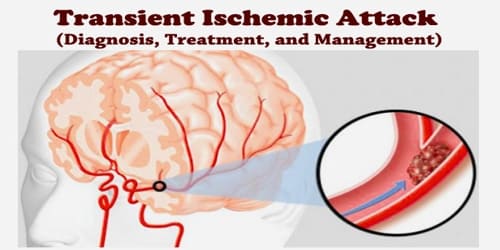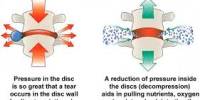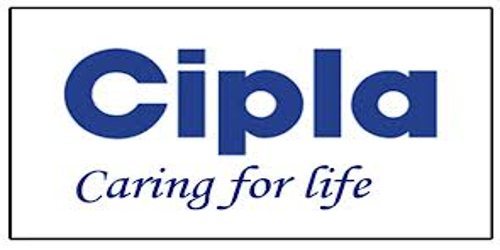Transient Ischemic Attack (Diagnosis, Treatment, and Management)
Definition: A transient ischaemic attack (TIA) or “mini-stroke”, producing similar symptoms, but usually lasting only a few minutes and causing no permanent damage. TIA is a brief episode of neurological dysfunction caused by loss of blood flow (ischemia) in the brain, spinal cord, or retina, without tissue death (infarction).
The disruption in blood supply results in a lack of oxygen to the brain. This can cause sudden symptoms similar to a stroke, such as speech and visual disturbance, and numbness or weakness in the face, arms, and legs. About 1 in 3 people who have a transient ischemic attack will eventually have a stroke, with about half occurring within a year after the transient ischemic attack.
A transient ischemic attack can serve as both a warning and an opportunity — a warning of an impending stroke and an opportunity to take steps to prevent it.
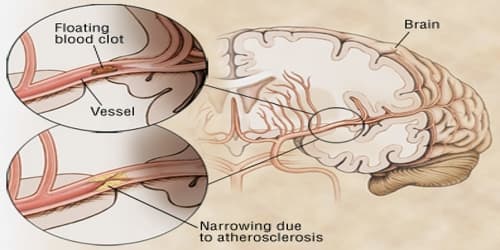
During a TIA, one of the blood vessels that supply our brain with oxygen-rich blood becomes blocked. This blockage is usually caused by a blood clot that has formed elsewhere in our body and traveled to the blood vessels supplying the brain, although it can also be caused by pieces of fatty material or air bubbles.
Risk factors associated with TIA are categorized as modifiable or non-modifiable. Non-modifiable risk factors include age greater than 55, sex, family history, genetics, and race/ethnicity. Modifiable risk factors include cigarette smoking, hypertension (elevated blood pressure), diabetes, hyperlipidemia, level of carotid artery stenosis (asymptomatic or symptomatic) and activity level. The modifiable risk factors are commonly targeted in treatment options to attempt to minimize the risk of TIA and stroke.
Diagnosis and Treatment of TIA: Diagnosis of TIA involves a combination of asking the patient questions about their symptoms and medical history, physical exam, and head imaging. To help determine the cause of people’s TIA and to assess their risk of a stroke, the doctor may rely on the following:
- Physical examination and tests
- Carotid ultrasonography
- Computerized tomography (CT) scanning
- Computerized tomography angiography (CTA) scanning
- Magnetic resonance imaging (MRI)
- Magnetic resonance angiography (MRA)
- Echocardiography
- Arteriography
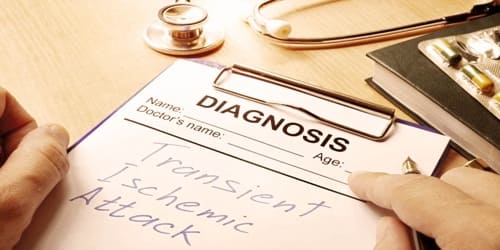
Since TIAs don’t last very long, there’s not much to do to treat its symptoms. They may be mostly gone by the time the ambulance arrives. The focus is on how to prevent another TIA or a full-blown stroke. And there are a lot of steps people can take. Depending on the cause of people’s TIA, the doctor may prescribe medication to reduce the tendency for blood to clot or may recommend surgery or a balloon procedure (angioplasty).
- Medications – Doctors use several medications to decrease the likelihood of a stroke after a transient ischemic attack. The medication selected depends on the location, cause, severity and type of TIA. The doctor may prescribe: Anti-platelet drugs, Anticoagulants, and Thrombolytic agents.
- Blood pressure control
- Diabetes control
- Cholesterol control
- Surgery – If people have a moderately or severely narrowed neck (carotid) artery, the doctor may suggest carotid endarterectomy (end-ahr-tur-EK-tuh-me). This preventive surgery clears carotid arteries of fatty deposits (atherosclerotic plaques) before another TIA or stroke can occur. An incision is made to open the artery, the plaques are removed, and the artery is closed.
Transient Ischemic Attack (TIA) Management: The goal of TIA management is to prevent a future stroke. The medicine and therapy used to depend on the exact cause of the TIA. In addition to lifestyle changes such as diet, physical activity, limiting alcohol intake, and not smoking, your healthcare provider may recommend medications to treat high blood pressure, high cholesterol, or heart disease. These changes may reduce people’s risk of further TIA or stroke.
There are many medications that help prevent blood clots from forming—reducing the risk of full-blown stroke.
Regardless of whether people have had a TIA or stroke in the past, there are a number of ways they can lower their risk of having either in the future. These include:
- maintaining a healthy weight
- eating healthily
- taking regular exercise
- limiting their alcohol consumption
- not smoking
If a TIA is caused by a blockage in the main artery in the neck that supplies blood to the brain, called the carotid artery, surgeries may be required to open the artery, and prevent a stroke. These procedures are known as endarterectomy and stenting.
Information Source:
